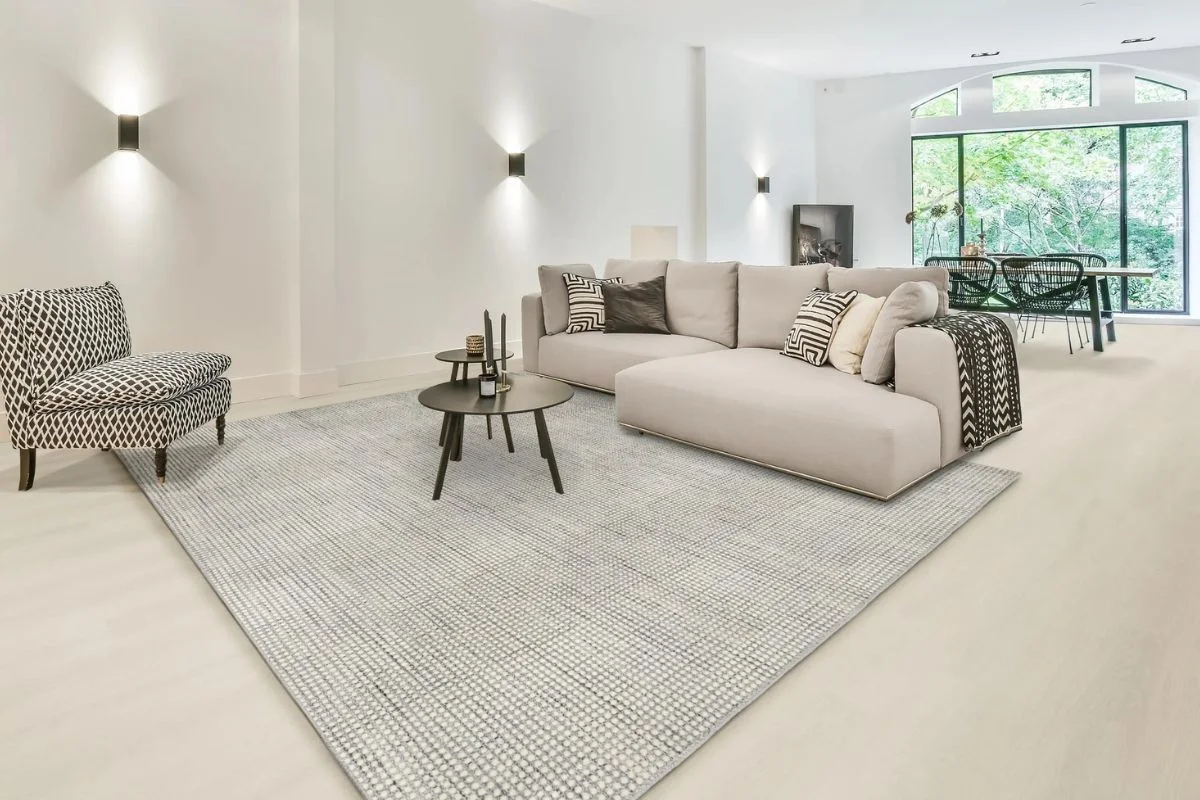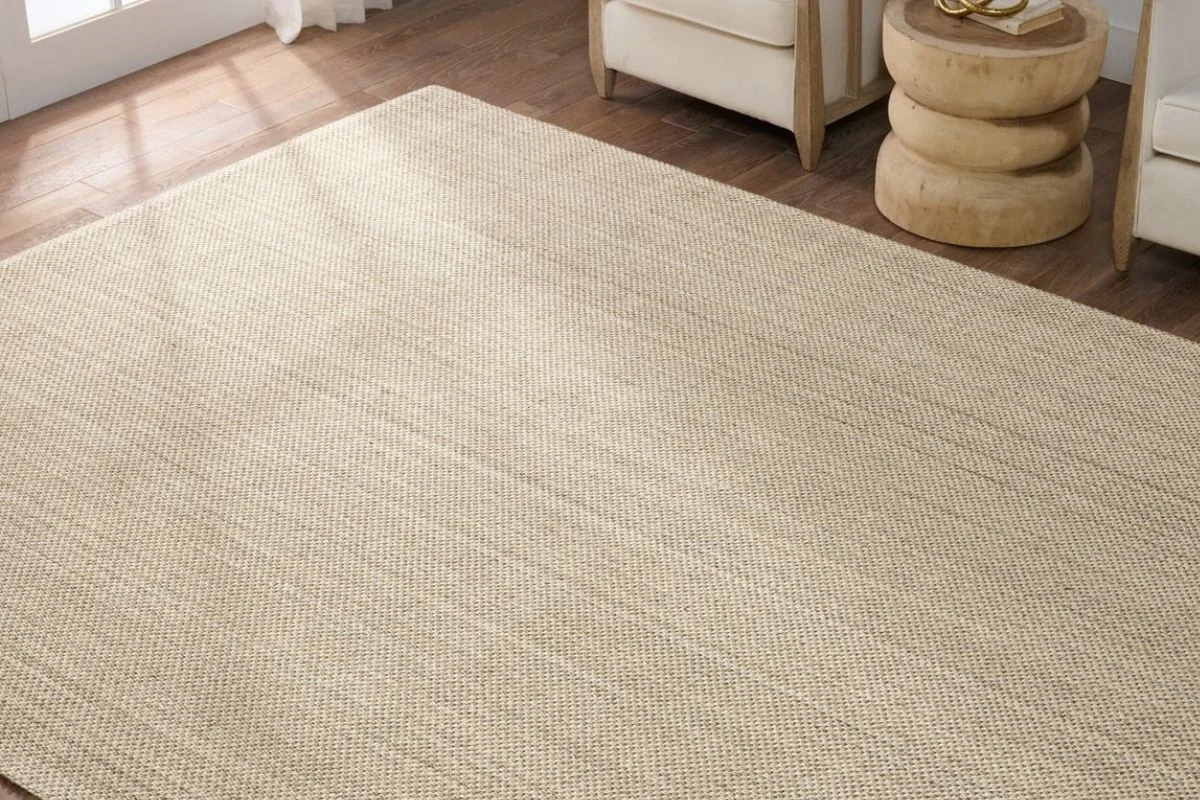Sisal rugs bring a touch of natural elegance and sophistication to any home decor scheme. Crafted from the fibers of the agave sisal Ana plant, these rugs exude a timeless charm and rustic appeal that seamlessly blends with various interior styles. With their distinct texture, durability, and eco-friendly nature, sisal rugs have become a popular choice for homeowners seeking to infuse their living spaces with warmth and character.
In this article, we delve into the allure of sisal rugs, exploring their unique qualities and the reasons behind their growing popularity in interior design. From their origins and manufacturing process to their versatility and practicality, sisal rugs offer a myriad of benefits that make them an ideal flooring option for modern homes.
Join us as we uncover the natural elegance of sisal rugs and discover how they can elevate the aesthetic appeal of your home while adding a touch of organic beauty and charm. Whether you’re looking to enhance the cozy ambiance of your living room, add warmth to your bedroom, or create a welcoming entryway, sisal rugs are sure to captivate your senses and transform your living space into a sanctuary of style and comfort.

The Allure and Popularity of Sisal Rugs in Interior Design
Sisal rugs have emerged as a quintessential element in modern interior design, captivating homeowners and designers alike with their natural charm and timeless elegance. Their allure stems from several key factors that have contributed to their widespread popularity in interior spaces around the world.
Natural Aesthetics: Sisal rugs exude an organic and earthy vibe that adds warmth and depth to any room. Their woven texture and neutral tones create a serene and inviting atmosphere, making them an ideal choice for creating cozy living spaces.
Versatile Design: One of the most appealing aspects of sisal rugs is their versatility in design. Whether you’re aiming for a coastal-inspired look, a rustic farmhouse feel, or a modern minimalist aesthetic, sisal rugs seamlessly complement a variety of interior styles and themes.
Texture and Depth: Sisal rugs bring texture and depth to a room, enhancing visual interest and tactile appeal. Their tactile surface invites touch and exploration, creating a sensory experience that adds character to the space.
Sustainability and Eco-Friendliness: As consumers become more environmentally conscious, sisal rugs have gained traction for their sustainable attributes. Made from natural fibers extracted from the agave plant, sisal rugs are biodegradable and renewable, making them an eco-friendly choice for eco-conscious homeowners.
Durability and Practicality: Sisal rugs are renowned for their durability and resilience, making them suitable for high-traffic areas such as living rooms, hallways, and entryways. Their sturdy construction ensures long-lasting performance, even in busy households with pets and children.
Hypoallergenic Properties: Unlike synthetic rugs that may trap allergens and dust particles, sisal rugs are hypoallergenic and resistant to mold and mildew growth. This makes them an excellent choice for individuals with allergies or respiratory sensitivities, promoting a healthier indoor environment.
Easy Maintenance: Sisal rugs are relatively easy to maintain and clean, requiring regular vacuuming and occasional spot cleaning to keep them looking fresh and vibrant. Their natural resistance to stains and spills makes them a practical and low-maintenance flooring option for busy households.
Definition and origins of sisal fibers
Sisal fibers are natural plant fibers extracted from the leaves of the Agave sisal Ana plant, native to the Yucatan Peninsula in Mexico and parts of Central America. The sisal plant, also known as Agave sisal Ana, belongs to the Agavaceae family and is cultivated for its strong and durable fibers, which have a variety of industrial and commercial applications.
The process of obtaining sisal fibers begins with the cultivation of the sisal plant, which typically takes place in tropical and subtropical regions with favorable growing conditions. The plant grows in rosettes, with long, sword-shaped leaves that can reach lengths of up to two meters.
Once the sisal plant reaches maturity, which usually takes about 7 to 10 years, the leaves are harvested by hand using sharp knives or machetes. The outer green part of the leaves is removed, leaving behind the white inner pulp, which contains the valuable sisal fibers.
The leaves are then crushed and beaten to extract the fibers, which are washed, dried, and brushed to remove impurities and debris. The fibers are then sorted and graded based on their length, strength, and fineness, with longer and finer fibers considered more desirable for certain applications.
Sisal fibers are known for their exceptional strength, durability, and resistance to wear and tear, making them ideal for a variety of purposes. They are commonly used in the production of ropes, twines, mats, carpets, and other woven products due to their natural toughness and abrasion resistance.
In addition to their practical applications, sisal fibers are also valued for their eco-friendly properties, as they are biodegradable and renewable, making them a sustainable alternative to synthetic fibers derived from petrochemicals.
Types of Sisal Rugs
Sisal rugs come in various types and styles, catering to different tastes and interior needs. Handwoven sisal rugs are highly sought after for their craftsmanship and unique patterns. Each piece is carefully woven by skilled artisans, giving it individuality and texture that machine-made rugs cannot replicate.
Braided sisal rugs feature strands of sisal fiber twisted together to create intricate patterns. This method enhances durability and adds visual interest, making the rugs suitable for high-traffic areas like hallways and kitchens. Flat-weave sisal rugs are simple yet elegant, offering a smooth surface that works well under furniture or as a base for layered rugs.
Some sisal rugs are dyed or patterned, expanding design possibilities. While natural sisal colors are most common, manufacturers also offer rugs in subtle hues like gray, green, or blue, allowing them to match diverse interior themes. Jute-sisal blends are another option, combining the softness of jute with the durability of sisal. These hybrid rugs are flexible and lightweight, ideal for contemporary spaces.
Selecting the right type depends on room function, style preference, and budget. While handwoven and braided rugs are durable and artisanal, flat-weave and hybrid rugs offer more affordability and modern appeal. Regardless of type, all sisal rugs bring natural warmth, texture, and sustainability into any space.
Benefits of Sisal Rugs
Sisal rugs offer numerous benefits that make them a preferred choice for eco-conscious and design-savvy homeowners. One of the main advantages is durability. Sisal fibers are naturally strong and resistant to wear, making these rugs ideal for high-traffic areas like living rooms, hallways, and offices.
Another benefit is their eco-friendliness. Made from renewable plant fibers, sisal rugs are biodegradable and sustainable. They do not contain harmful chemicals or synthetic materials, making them safe for households with children or pets. Sisal rugs also help regulate indoor air quality by reducing dust accumulation and allergens.
The natural texture of sisal rugs adds a tactile dimension to interiors. They create visual interest and contrast when paired with soft furnishings or wooden floors. Their neutral color palette complements a wide range of décor styles, from minimalist modern to rustic farmhouse.
Sisal rugs are low-maintenance. Regular vacuuming and occasional spot cleaning are usually sufficient to maintain their appearance. While they may not be as soft as wool or cotton rugs, their firmness and resilience make them suitable for areas prone to foot traffic.
In addition to aesthetics and durability, sisal rugs are versatile. They can serve as area rugs, runners, or wall coverings, enhancing both function and style. Combining practicality, environmental responsibility, and timeless elegance, sisal rugs are a smart flooring choice for any space.
How to Choose the Right Sisal Rug
Choosing the right sisal rug involves considering several factors to ensure functionality, durability, and aesthetic harmony. First, evaluate the size of the room. Large rooms may benefit from expansive area rugs, while narrow hallways require runners. Accurate measurements prevent oversized or undersized rugs from overwhelming or underwhelming the space.
Next, consider color and texture. Natural sisal colors, such as beige, ivory, or brown, offer versatility, while dyed rugs can complement specific color schemes. The texture should match the intended use; coarser weaves are durable but may feel rough, while smoother flat-weaves offer comfort and elegance.
Durability is critical. High-traffic areas like entryways or kitchens require tightly woven, dense rugs to withstand wear. Consider hybrid options like sisal-jute blends for added flexibility and softness. Also, assess maintenance requirements. Some patterns and weaves show stains or dirt more easily than others, so choose a style that fits your cleaning routine.
Finally, think about placement and functionality. Sisal rugs perform best in dry areas, away from excessive moisture. In spaces prone to spills, consider protective pads or mats underneath. By evaluating these factors, homeowners can select a sisal rug that enhances both the beauty and practicality of their interiors.
Sisal Rugs in Living Rooms
Sisal rugs are particularly effective in living rooms, adding warmth, texture, and sophistication. Their natural fibers complement wooden flooring, stone tiles, or even modern concrete surfaces. The earthy tones of sisal rugs create a cozy atmosphere while maintaining a neutral base that allows furniture and décor to stand out.
For contemporary living rooms, flat-weave or braided sisal rugs offer clean lines and subtle texture. Pairing a sisal rug with soft cushions, throws, and upholstered furniture creates a balanced contrast between firm and soft textures. Natural color palettes enhance light-filled spaces, while darker shades add depth to larger rooms.
In traditional or rustic interiors, handwoven or patterned sisal rugs bring artisanal charm. Layering smaller sisal rugs over neutral carpets adds dimension and highlights specific areas like coffee tables or seating arrangements. Sisal rugs also serve as excellent conversation pieces due to their natural aesthetic and craftsmanship.

Benefits of Sisal Rugs
Sisal rugs offer a range of benefits that make them a popular choice for interior decor. Here are some of the key advantages of sisal rugs:
Natural Aesthetics: Sisal rugs exude a natural and organic aesthetic that adds warmth and texture to any room. Their neutral tones and woven texture create a timeless and inviting ambiance that complements a variety of interior styles.
Durability and Resilience: One of the most significant benefits of sisal rugs is their exceptional durability and resilience. Sisal fibers are known for their strength and toughness, making sisal rugs suitable for high-traffic areas such as living rooms, hallways, and entryways. They can withstand heavy foot traffic and daily wear and tear without showing signs of deterioration.
Stain Resistance: Sisal rugs are naturally resistant to stains and spills, making them easy to clean and maintain. The dense weave of sisal fibers helps prevent liquids from penetrating the rug’s surface, allowing spills to be quickly wiped away without leaving permanent marks.
Hypoallergenic Properties: Sisal rugs are hypoallergenic and resistant to mold, mildew, and dust mites, making them an ideal choice for individuals with allergies or respiratory sensitivities. Unlike synthetic rugs, which may trap allergens and dust particles, sisal rugs promote a healthier indoor environment by minimizing allergen exposure.
Sound Absorption: Sisal rugs have excellent sound-absorbing properties, helping to reduce echoes and noise levels in the home. The dense weave of sisal fibers absorbs sound waves, making rooms feel quieter and more peaceful, especially in open-plan spaces or rooms with hard flooring surfaces.
Eco-Friendly and Sustainable: Sisal rugs are made from natural plant fibers derived from the agave sisalana plant, making them a renewable and eco-friendly flooring option. The cultivation and processing of sisal fibers have minimal environmental impact compared to synthetic materials, making sisal rugs a sustainable choice for environmentally conscious consumers.
Versatility in Design: Sisal rugs come in a variety of colors, patterns, and textures, allowing homeowners to find the perfect rug to suit their decor preferences. Whether you prefer a classic neutral rug or a bold patterned design, there is a sisal rug to complement any interior style and color scheme.
Choosing the Perfect Sisal Rug
Selecting the ideal sisal rug involves considering several factors to ensure it complements your space and meets your specific needs. Here are key considerations to help you choose the perfect sisal rug:
Size and Shape: Measure the area where you intend to place the sisal rug to determine the appropriate size and shape. Consider the dimensions of the room and the placement of furniture to ensure the rug fits proportionately and creates a balanced layout.
Weave and Texture: Sisal rugs come in various weaves and textures, ranging from tight weaves with a smooth surface to looser weaves with a more textured appearance. Choose a weave and texture that aligns with your desired look and feel, considering factors such as comfort and visual appeal.
Color and Tone: Consider the color scheme and decor style of your space when selecting a sisal rug. Opt for neutral tones like beige, taupe, or gray for a timeless and versatile look that complements any decor. Alternatively, choose a bold or patterned sisal rug to make a statement and add visual interest to the room.
Pile Height and Thickness: Determine the desired pile height and thickness of the sisal rug based on your preferences and practical considerations. Thicker rugs provide extra cushioning and comfort underfoot, while lower pile rugs are easier to clean and maintain, especially in high-traffic areas.
Budget Considerations: Establish a budget for your sisal rug purchase and explore options within your price range. Sisal rugs come in a range of price points depending on factors such as size, quality, and brand. Consider investing in a high-quality sisal rug that offers durability and longevity, especially for areas with heavy foot traffic.
Rug Padding: Consider investing in rug padding to enhance the comfort and stability of your sisal rug. Rug padding helps prevent slipping and sliding, adds cushioning underfoot, and protects the underlying flooring surface. Choose a rug pad that is compatible with sisal rugs and provides the desired level of support.
Maintenance Requirements: Evaluate the maintenance needs of sisal rugs and choose a rug that aligns with your lifestyle and cleaning preferences. Sisal rugs require regular vacuuming and occasional spot cleaning to remove dirt and stains. Consider opting for a stain-resistant treatment or sealant to prolong the life of your sisal rug and make cleaning easier.
Sisal Rugs for Bedrooms
In bedrooms, sisal rugs provide both comfort and visual appeal. While they are firmer than wool, their natural texture offers a grounding effect, complementing soft bedding and textiles. Placing a sisal rug under the bed or alongside it creates a cozy surface for bare feet while enhancing the room’s aesthetic.
Neutral sisal tones blend seamlessly with various bedroom color schemes. Earthy beige, soft ivory, or light brown hues contribute to a calming atmosphere, ideal for rest and relaxation. For layered looks, smaller rugs or runners can be placed alongside beds or at the foot of the bed to create depth and visual interest.
Durability is an advantage in bedrooms, especially if children or pets share the space. Sisal rugs resist wear and tear better than delicate fabrics, maintaining their appearance over time. However, it is important to protect the rug from moisture, as bedrooms may occasionally be exposed to humidity.
Sisal rugs also complement minimalist, bohemian, or rustic bedroom designs. Their natural fibers harmonize with wooden furniture, woven baskets, and linen textiles, creating a cohesive and inviting environment. Overall, sisal rugs balance aesthetics, practicality, and comfort in bedroom spaces.
Maintenance and Cleaning of Sisal Rugs
Proper maintenance is key to preserving the beauty and longevity of sisal rugs. Regular vacuuming is essential to remove dust, dirt, and debris trapped in the fibers. Avoid using a beater bar attachment, as it can damage the natural weave. A rug pad underneath helps prevent slippage and reduces wear.
Sisal rugs should be kept dry, as moisture can weaken fibers, cause mold, or lead to color changes. Spills should be addressed immediately by blotting with a dry cloth. For stubborn stains, a mild detergent diluted in water can be used carefully, but avoid soaking the rug. Professional cleaning may be necessary for deep cleaning or large rugs.
Rotating the rug periodically ensures even wear, particularly in high-traffic areas. Avoid placing sisal rugs in humid rooms like bathrooms or basements. Exposure to direct sunlight over extended periods can cause fading, so consider UV protection or rotating the rug to prevent uneven discoloration.
By following proper maintenance practices, sisal rugs retain their texture, durability, and natural beauty for years. Their low-maintenance requirements, combined with eco-friendliness, make them ideal for both residential and commercial spaces.
Sisal Rugs for High-Traffic Areas
Sisal rugs are particularly suitable for high-traffic areas due to their strength and resilience. Hallways, entryways, and living rooms benefit from the durability of tightly woven sisal fibers, which withstand daily foot traffic without losing shape or texture.
The natural coarseness of sisal helps hide dirt and debris, making these rugs ideal for homes with children or pets. While soft furnishings may show wear quickly in busy areas, sisal rugs maintain their appearance longer due to their robust construction.
To maximize longevity in high-traffic zones, use rug pads underneath to prevent slippage and reduce fiber compression. Consider braided or flat-weave sisal rugs, which are more durable than loosely woven styles. Layering sisal rugs over other flooring can also protect delicate surfaces while adding texture and style.
High-traffic areas often face exposure to sunlight, dirt, and spills. Sisal rugs are naturally stain-resistant to some extent, but preventive care and periodic rotation help maintain uniform appearance. Overall, sisal rugs provide a practical and stylish solution for busy spaces in the home or office.
Sisal Rugs and Eco-Friendly Living
Sisal rugs are a sustainable flooring choice due to their natural origin and biodegradable properties. Made from the Agave sisalana plant, sisal fibers are renewable and require minimal chemical processing. Choosing sisal rugs contributes to reducing reliance on synthetic carpets, which often involve petroleum-based materials and harmful chemicals.
The production of sisal rugs supports eco-conscious manufacturing and often involves fair-trade practices, benefiting local communities in regions where the plant is cultivated. Unlike synthetic alternatives, sisal rugs do not release harmful VOCs (volatile organic compounds), promoting healthier indoor air quality.
Sisal rugs can also be recycled or composted at the end of their life cycle, making them a zero-waste option. By investing in eco-friendly rugs, homeowners embrace sustainable interior design without compromising style or durability.
Their natural aesthetic aligns with green design principles, pairing beautifully with organic furnishings, wooden floors, and natural textiles. Sisal rugs demonstrate that environmentally responsible choices can also enhance the elegance and functionality of living spaces.

Care and Maintenance of Sisal Rugs
Proper care and maintenance are essential to preserve the beauty and longevity of your sisal rug. Follow these tips to keep your sisal rug looking its best for years to come:
Regular Vacuuming: Vacuum your sisal rug regularly to remove loose dirt, dust, and debris. Use a vacuum cleaner with a brush attachment or a suction-only vacuum to prevent damage to the delicate fibers.
Rotate the Rug: Rotate your sisal rug periodically to ensure even wear and tear. This helps prevent one area of the rug from receiving more foot traffic than others, prolonging its lifespan.
Spot Cleaning: Attend to spills and stains immediately to prevent them from setting into the fibers. Blot the affected area with a clean, dry cloth or paper towel to absorb excess liquid. Avoid rubbing the stain, as this can spread it further. Use a mild detergent solution and gently dab the stain until it lifts.
Avoid Moisture: Sisal rugs are sensitive to moisture, so avoid placing them in areas prone to spills or high humidity, such as bathrooms or kitchens. If the rug does get wet, allow it to air dry thoroughly in a well-ventilated area.
Sunlight Exposure: Limit exposure to direct sunlight to prevent fading and discoloration of your sisal rug. Use window treatments such as blinds or curtains to block UV rays and protect the rug from sun damage.
Use Rug Pads: Place a non-slip rug pad underneath your sisal rug to provide cushioning, prevent slipping, and protect the underlying flooring surface. Rug pads also help extend the life of your sisal rug by reducing friction and wear.
Professional Cleaning: Consider professional cleaning for deep cleaning and stain removal of your sisal rug. Professional cleaners have the expertise and equipment to safely clean and restore sisal rugs without causing damage to the delicate fibers.
Brushing and Grooming: Use a soft-bristled brush or a natural sponge to gently brush and groom your sisal rug. This helps remove embedded dirt and revive the texture of the fibers, keeping your rug looking fresh and vibrant.
Trim Loose Fibers: Trim any loose fibers or snags on your sisal rug to prevent them from unraveling further. Use sharp scissors to carefully trim the fibers to the same length as the surrounding area.
Rotate the Rug Pad: If you’re using a rug pad underneath your sisal rug, rotate it along with the rug to ensure even wear and prolong the life of both the rug and the pad.
Conclusion
In conclusion, sisal rugs offer a perfect blend of natural beauty, durability, and versatility that make them a popular choice for interior decor. With their organic texture and neutral tones, sisal rugs add warmth and elegance to any space, creating a cozy and inviting atmosphere.
The most important frequently asked questions about Sisal Rug
What is a sisal rug?
A rug made from natural sisal fiber, derived from the agave plant.
Are sisal rugs eco-friendly?
Yes, they are biodegradable and sustainably sourced.
Can sisal rugs be dyed?
Yes, but colors are often muted due to natural fibers.
Are sisal rugs durable?
Yes, they are strong and suitable for high-traffic areas.






